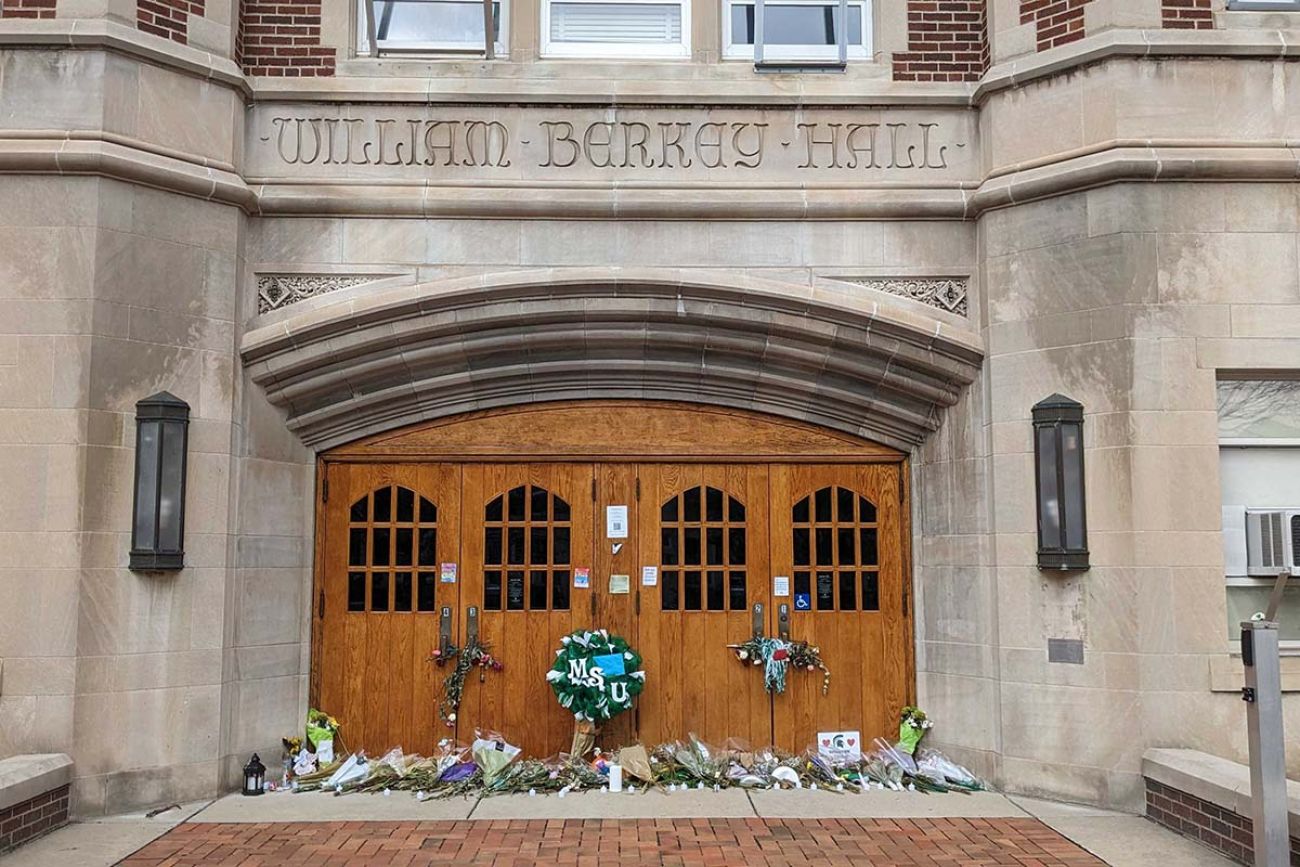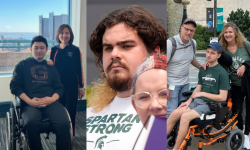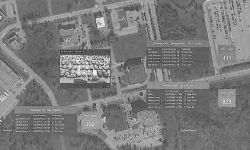MSU police can’t explain 13-minute alert gap, remain mum on shooting details

- MSU police offered a new explanation Wednesday for why it took 13 minutes for it to warn students of an active campus shooter
- In that time, the shooter went from killing two students in Berkey Hall to the MSU Union, where he killed a third student
- Students have questioned the timing, and lack of helpful detail in the alerts police sent out that night
LANSING — More than two weeks after a mass shooting at Michigan State University, campus police are struggling to explain why it took them 13 minutes after a gunman first opened fire to send an emergency alert to students.
By the time police issued the initial "run, hide, fight" alert at 8:31 p.m. on Feb. 13, the shooter had already fled on foot from Berkey Hall, where he had killed two students, and was entering the MSU Union, where he killed a third.
An MSU police spokesperson on Wednesday walked back the department's prior explanation that university police needed to contact an off-duty officer to send the alert because all on-duty officers had rushed to Berkey Hall after 9-1-1 callers first reported gunfire at 8:18 p.m.
Related:
- Classroom locks, active intruder training promised after MSU shootings
- Michigan State shooting: Alerts to students delayed as police rushed to campus
- MSU shooting update: University to ask state for more security money
In reality, a "front-desk employee" at police headquarters sent the “pre-scripted” alert upon a radio request from a shift supervisor who was responding to the shooting, Communications Manager Dana Whyte told Bridge Michigan.
But with "a lot of radio traffic" that night, the front-desk employee — who is not a police officer and does not usually issue emergency alerts — felt the need to confirm the request with the shift supervisor, Whyte said.
It's not clear how long that confirmation process may have delayed the alert. MSU police would have to "look back at the radio traffic” from the shooting to confirm a specific timeline for the alert request, Whyte said.
The alert to students did not identify the location of the initial shooting reports, except to say they were on the East Lansing campus, prompting criticism from some students who have questioned why they weren’t told more and warned sooner on the night of the shooting.
Other students later said they received an email rather than a more immediate text message, the result of a default alert setting in the university system.
The alert request was discussed on an MSU police radio channel, Whyte said. MSU Police also used a regional radio channel, and audio from that feed shows officers in East Lansing and beyond were well aware of the shooting by the time the first alert occurred.
Within three minutes of the first 9-1-1 call from Berkey Hall, authorities had multiple callers telling them the attacker had shot multiple people inside Room 114, that another person may have been wounded in a nearby classroom and that students had barricaded a door in the building.
Then, 10 minutes after the first call — and three minutes before the first alert went out — an officer claimed the shooter was heading toward the MSU Union.
Three minutes later, and 13 minutes after the first call, MSU police issued their first emergency alert to warn other students — at about the exact time that officers confirmed the shooter was already in the union, where student Brian Fraser was killed.
Subsequent emergency alerts issued that night were sent out by an off-duty employee more accustomed to using the notification system, according to Whyte.
Those messages offered more detail as police began to provide students, faculty and community members with descriptions of the shooter and where he had been seen on campus, she said.
MSU police used social media to blast out a surveillance camera image of the suspected shooter at 11:18 p.m., a move they credit with spurring a tip that helped authorities find the suspected shooter less than twenty minutes later.
Other factors also contributed to delays in finding the gunman, including that MSU does not currently have the ability to monitor campus-wide cameras in real-time, a functionality the university said it was already working to add before the shooting.
There are also no security cameras inside Berkey Hall, and expert investigators capable of reviewing footage from other cameras were not on duty at the time and had to be called in, Whyte acknowledged, confirming a Tuesday report by The Detroit News.
MSU officials said Wednesday they plan to install more security cameras on campus and begin outfitting 1,300 classroom doors with an "appropriate lock system" allowing instructors to secure the rooms in the event of an emergency.
The university will also make previously voluntary active violence training mandatory for all students, faculty and staff, beginning this fall.
While police continue to investigate the shootings, there is “no indication” the shooter — later identified as 43-year-old Anthony McRae of Lansing — entered any other buildings on campus before leaving on foot.
Roughly three hours later, police confronted McRae about 4 miles from campus, at Lake Lansing and Larch, where he fatally shot himself. He was carrying two 9 millimeter handguns, eight loaded ammunition magazines, two empty magazines and a small pouch with 50 used bullets, authorities said.
In addition to killing Fraser, McRae killed Arielle Anderson, 19, of Harper Woods, and Alexandria Verner, 20, of Clawson and shot and seriously wounded five other students.
While some survivors have confirmed they were in Berkey Hall, police have declined to say how many students were injured in each building. Doing so, they said, could "cause more harm" to the victims and violate federal laws governing student privacy rights, Whyte contended to Bridge.
MSU police have so far declined to release other details as well. The agency has for instance not answered questions about where and when McRae purchased his guns or how many shots he fired.
They also declined to release the two-page note discovered in his wallet after he killed himself. Police have broadly said the note contained a list of businesses that he felt slighted him.
State police are leading that part of the investigation, Whyte said. State Police are also probing what route McRae took to walk from Berkey Hall to the MSU Union, which is about 0.4 miles away, she said.
Additionally, Ingham County has denied a records request from Bridge for 9-1-1 calls that night, citing an ongoing investigation.
See what new members are saying about why they donated to Bridge Michigan:
- “In order for this information to be accurate and unbiased it must be underwritten by its readers, not by special interests.” - Larry S.
- “Not many other media sources report on the topics Bridge does.” - Susan B.
- “Your journalism is outstanding and rare these days.” - Mark S.
If you want to ensure the future of nonpartisan, nonprofit Michigan journalism, please become a member today. You, too, will be asked why you donated and maybe we'll feature your quote next time!



